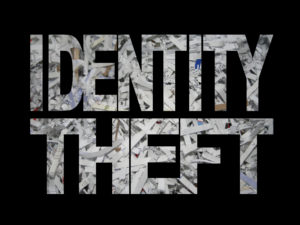Article updated January 13, 2025
This article was originally published in 2018, and sadly, the issues we faced then are still prevalent today. What has changed is the onslaught of technology fueled by artificial intelligence (AI) and machine learning (ML). Now, the bad guys have weapons that most of us couldn’t have imagined even two or three years ago. Our hope is to make readers more aware of tax-related identity theft and tax fraud scams that can steal their most treasured information during tax season.
It’s that time again for taxpayers’ annual trip to the financial dentist: tax time. Whether you do your taxes yourself or pay a service, it’s a great feeling to send off your return with a refund in the works.
Until…
You receive a letter from the Internal Revenue Service (IRS) politely telling you that your tax refund has already been processed. You’ve become the newest member of the tax-related identity theft club. Millions of hardworking Americans who file taxes fall victim to this growing problem every year.
Let’s dig into what you can do and what to look for to protect your information.
What Steps Can I Take to Prevent Tax-Related Identity Theft?
Tax-related identity theft occurs when someone uses your stolen Social Security number (SSN) to file a fraudulent tax return under your name.
If you’re lucky, you’ll receive a letter from the IRS telling you it suspects a fraudulent tax return has been filed under your name. Otherwise, you’ll find out once you’ve filed. Either way, you have some annoying and potentially time-consuming work ahead to clear up the problem. By the way, remember that the ONLY way you will hear from the IRS about these issues is by letter. The IRS will never call or email you.
Here’s the good news: You will eventually get the refund due to you from the IRS and/or your state.
The most effective way to lower your risk for tax-related identity theft is to file early. If you don’t, the thieves will. For them, the earlier they file, the earlier they get your refund in their hands.
Here are seven steps to help you clear up the problem and safeguard your refund:
Step #1: Report Tax-Related Identity Theft Immediately
Start by visiting the IRS identity theft website: identitytheft.gov. You can also call the IRS Identity Protection Specialized Unit at 1-800-908-4490. You’ll need to complete an identity theft affidavit (IRS Form 14039) so the IRS can place an alert on your account.
Don’t forget to contact your state revenue or taxing agency. Tax-related identity theft can get a big head-start with your SSN. Also, report the theft to your local police department to create an official theft report, which some government agencies and credit bureaus may require.
Notify your personal financial institutions such as banks and credit card companies to further protect your accounts.
Step #2: Compile Your Evidence
Gather these documents to support your case:
- Copies of your tax returns from the past two to three years.
- Driver’s license, birth certificate and passport.
- Recent utility bills.
- Marriage certificate (if applicable).
- Police report.
This information helps the IRS verify your legitimate tax return and flag fraudulent activity.
Step #3: Protect Yourself for the Future
The IRS will issue you a personal identification number (PIN) to provide an additional layer of security. Use this PIN along with your SSN when filing future tax forms. You’ll receive a new PIN every year.
Keep your electronic devices secure:
- Ignore unknown phone numbers that could harbor malware.
- Carefully review and disable unnecessary applications.
- Attach an email address to fraud alerts for updates.
Additionally, avoid carrying your Social Security card or documents containing your SSN. Protect your devices with anti-spam and anti-virus software and change passwords regularly.
Beware of phishing scams. The IRS will never call, email or text to demand immediate payment. Report such incidents to local law enforcement.
Step #4: Contact the Credit Bureaus
Place a fraud alert on your credit records by contacting one of the three major credit bureaus:
- Equifax: www.Equifax.com, 800-525-6285
- Experian: www.Experian.com, 888-397-3742
- TransUnion: www.TransUnion.com, 800-680-7289
Fraud alerts last 90 days but can be renewed. They warn potential creditors that you’re a victim of identity theft and require them to verify your identity before issuing credit. Consider placing a credit freeze for added protection.
Step #5: Check Your Credit Reports
You’re entitled to a free annual credit report from each agency. Regularly check these reports for tax-related identity theft and unauthorized activity, such as new accounts or inaccuracies. Report any errors to your bank, the credit agency, and the business reporting incorrect information.
Step #6: Change ALL Your Passwords
Identity thieves exploit data breaches to access multiple accounts. Use unique, strong passwords for tax preparation and your bank accounts. Avoid reusing passwords across different platforms. Change compromised passwords immediately.
Step #7: Be Patient
Resolving tax-related identity theft can take up to 180 days. Once the IRS flags your return as fraudulent, future returns will be manually reviewed, potentially delaying refunds. However, rest assured, the IRS will eventually pay your refund.
How Are New Technologies Impacting Identity Theft?
AI and machine learning have significantly increased the sophistication of scams. Here are some new methods:
- Text Message Scams: Scammers mimic reputable organizations like the IRS to request personal information. Never click on unsolicited links.
- Social Media Scams: Fraudsters create fake profiles to steal personal information. Be cautious about accepting requests from unknown accounts for your tax records.
- Cryptocurrency Scams: Loose regulations enable scammers to lure victims into fake investments and phishing schemes.
- Vishing (Voice Phishing): Scammers use fake calls to impersonate organizations, including the IRS, to extract sensitive details. Initiate contact yourself to verify legitimacy. Phishing emails also remain a problem
- Deep Fake Scams: AI-generated content can impersonate individuals or agencies to manipulate victims into providing information.
Final Thoughts
Tax-related identity theft remains a persistent issue. By staying vigilant, filing early and leveraging security measures, you can minimize risks to your important tax information. Protect your personal information year-round and remain informed about evolving threats. And, don’t be shy about looking for help from tax professionals.
Take action today to safeguard your identity and your tax refund.



 How to Protect Yourself from ID Theft and Scams This Holiday Season and Beyond
How to Protect Yourself from ID Theft and Scams This Holiday Season and Beyond  Secure Online Shopping is 90% Common Sense.
Secure Online Shopping is 90% Common Sense.  Take Control of Your Personal Information to Avoid Identity Theft
Take Control of Your Personal Information to Avoid Identity Theft 

